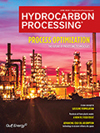Connecting the dots to bankability with low-carbon bio-hubs for sustainable fuels and chemicals
The transportation fuel and chemicals sectors are facing multiple urgent challenges. They must quickly reduce their dependence on petroleum resources with cost-competitive solutions while also addressing concerns such as greenhouse gas (GHG) emissions and decarbonization.
IP: 3.135.194.49
The Authors
Martinez Gacio, J. - Axens, Rueil-Malmaison, France
Jorge Martinez Gacio works as the BioTech Product Line Manager within the Renewables Product Line of the Technology & Technical Support Business Division at Axens. He leads the development, promotion and commercialization of the company’s bio-based technologies offerings, providing solutions to the industry to better prepare the shift to renewables and overcome the energy transition challenge. He is specialized in the lignocellulosic residues value chain in the field of cellulosic biofuels and biochemicals.
Martinez Gacio began his professional career at Technip, where he served as Process Engineer in detailed engineering projects for the pharmaceutical industry. He joined Axens in 2006, where he first served as Senior Process Engineer and Project Manager in worldwide projects for the refining and petrochemicals industry. He holds an MSc degree in advanced technology in petrochemicals, polymers and plastics from IFP School (France) and a chemical engineering degree from the University of Santiago de Compostela (Spain). He also holds a chemistry degree from the University of Vigo (Spain). The author can be reached at Jorge.MARTINEZ-GACIO@axens.net.
Bernard, Y. - Axens, Lyon France
Yvon Bernard works as a Business Development Manager in the field of low carbon and renewables for Axens and is in charge of developing and promoting the technologies for the production of biofuels and bio-based chemicals.
He began his professional career with 10 yr working in the field in the upstream oil and gas with Schlumberger in Southeast Asia and the Middle East region, and in the downstream business with Axens. He joined Axens in 2014 as a startup Manager, where he was in charge of two major refineries startups in Thailand and Kazakhstan. After 3 yr as a Sales Manager for process licensing in the Asia region, he moved to the renewable Group as a Business Development Manager.
Bernard holds an MSc degree in general engineering from the engineering school of Arts et Métiers in Lille (France) with a final graduating program from Kunming in China. The author can be reached at Yvon.BERNARD@axens.net.
Related Articles
From the Archive






Comments